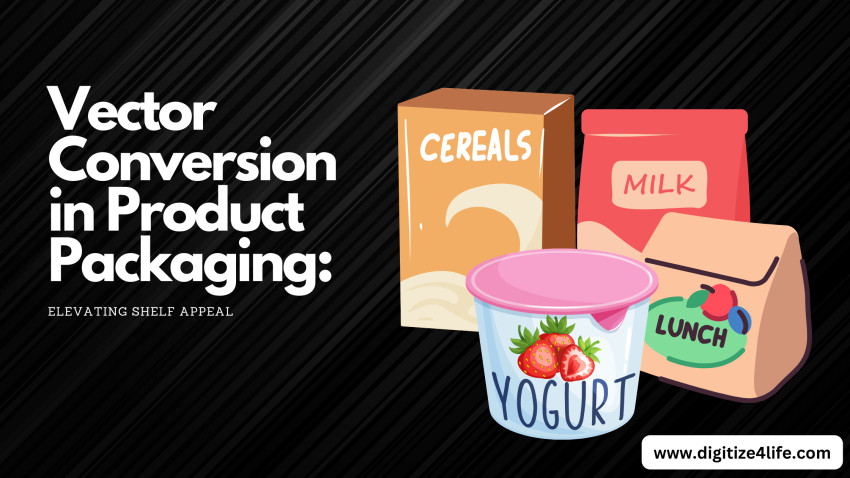
Product Packaging: Using Vector Conversion to Increase Shelf Appeal
First of all,
In the ever-changing realm of product packaging, where aesthetics is crucial, vector conversion proves to be a game-changer. In addition to improving product packaging's looks, vector conversion also greatly raises shelf appeal. In the context of product packaging, this blog examines the transformative potential of vector conversion, examining its uses, advantages, and potential effects on consumer perception.
The Significance of Vector Conversion in Packaging
The Influence of Accuracy
The technique of transforming raster images into scalable vector graphics is known as vector conversion. This conversion method yields unparalleled precision and clarity. In the domain of product packaging, where complex patterns and minute details are crucial, vector conversion guarantees that each component looks distinct and crisp.
Design Versatility
The capacity of vector conversion to retain quality at any size is one of its main benefits. Vector graphics adapt easily to any size, be it a small label or a massive container design. Because of its adaptability, packaging designers can experiment with different sizes without sacrificing the packaging's aesthetic integrity.
Packaging Applications for Vector Conversion:
Icons and Brand Logos
Icons and brand logos serve as a product's face. These important components are kept crisp and clear across a range of sizes and packing materials thanks to vector conversion. Consumer trust and brand recognition are enhanced by consistent branding.
Text Components and Typography
Text components, such as instructions and product information, are guaranteed to be readable and sharp thanks to vector conversion. This is especially crucial for small letter sizes, which are frequently seen on packaging.
Detailed Graphics and Illustrations
For many products to stand out on the shelf, elaborate images and graphics are essential. Because vector conversion maintains these elements' fine features, customers will find them visually captivating and enticing. This is particularly important for sectors like cosmetics, where in-depth product photos can affect consumers' decisions to buy.
Vector Conversion's Advantages for Packaging Designers
Time-saving Techniques
Because vector files are smaller than raster graphics, handling and sharing them is simpler. When working on large projects with several contributors, packaging designers will find this efficiency very beneficial. The entire design process is accelerated by faster file processing.
Economical Offset Printing
This lowers the chance of pixilation during the printing process, which is beneficial. Economical printing guarantees that the finished packaging design appears as planned without adding to the cost.
From the viewpoint of the customer:
Improved Visual Experience
The packaging of a product is frequently their first interaction with it. Packaging designs that have been transformed to vectors offer a better visual experience, making a good first impression and influencing consumer choices. The idea of quality and attention to detail is enhanced by the crisp, clean lines.
Appreciation and Confidence
Trust is developed and brand recognition is established via consistent, superior packaging. Customers are more inclined to select a well-known and attractive brand over rivals when they see it on the shelf. To keep this uniformity, vector conversion is essential.
Conclusion: Using Vector Conversion to Elevate Products: In the cutthroat realm of product packaging, vector conversion shows itself to be an effective tool for both businesses and designers. Its influence on consumer trust, brand identification, and shelf attractiveness cannot be emphasized. Using technologies like vector conversion is essential to staying ahead of the curve and producing packaging designs that genuinely stand out as the packaging business develops.




